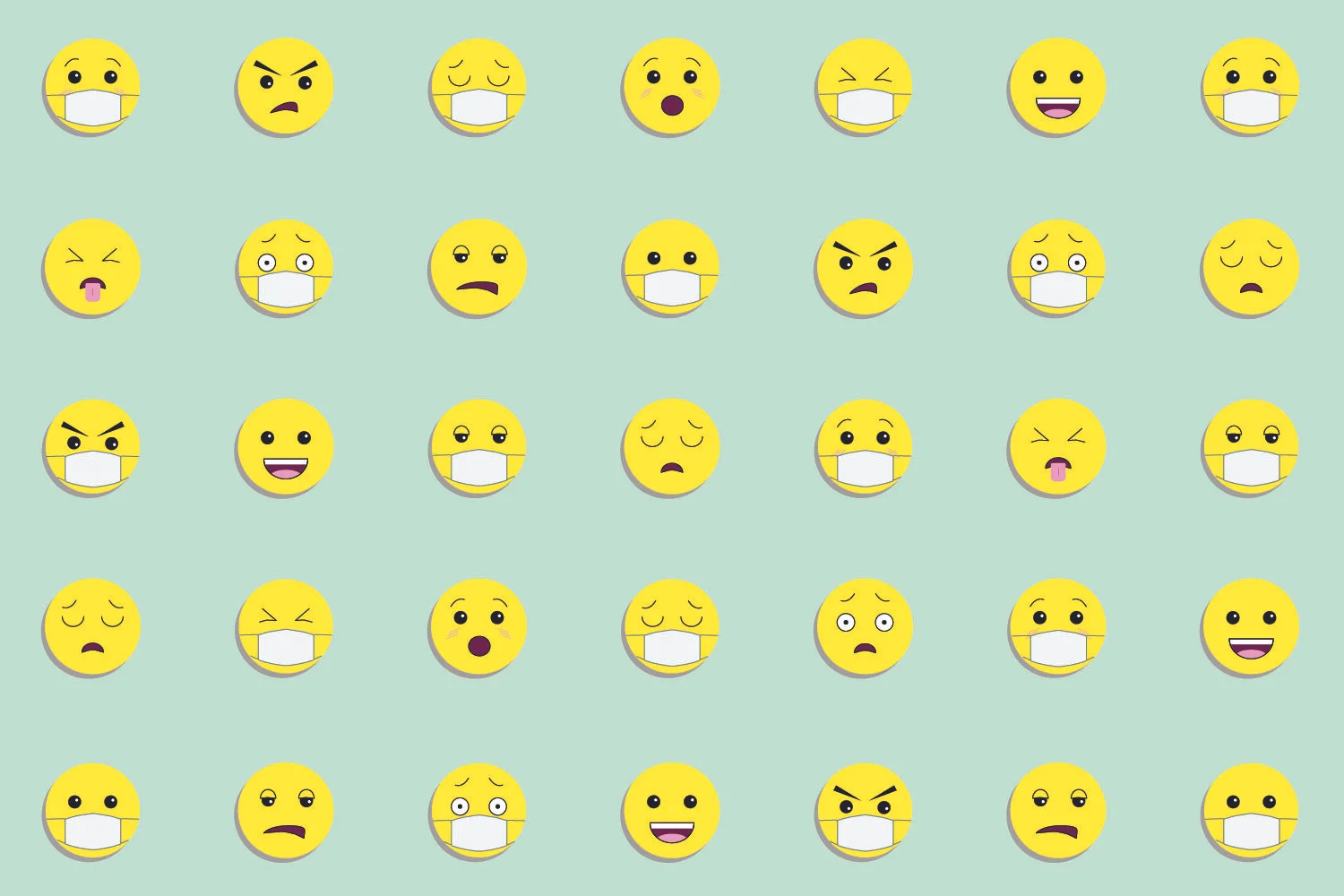Banner by Lilly Koerner
The Stories We Tell, Behind the Masks
By Jerusha George
Joy, surprise, contempt, sadness, anger, disgust, fear. No, those are not just the names of the characters from the movie Inside Out. They are the seven emotions that researchers have determined to be universal facial expressions: the emotions that we all display on our faces regardless of societal or cultural norms. Facial expressions are at the core of human socialization—they not only tell us how others feel, but they also tell us how to feel.
In every one of our face-to-face social interactions (or screen-to-screen these days), we are constantly collecting information from other peoples’ faces, discerning their emotions, and appropriately responding to said emotions. This aspect of our everyday exchanges allows us to build trust and rapport with others. Even infants use facial expressions to communicate their emotions and needs to their parents. For some professions, acute abilities to read emotions and to respond can prove to be very useful. Physicians can read their patients’ expressions to detect underlying emotions, to empathize, to build trust. Teachers can read their students’ faces to ascertain how they feel, to see if the material is sticking, to build rapport.
When we interact with people, a whole host of processes take place in our brains. The occipital lobe, or the visual region of our brain, is largely responsible for reading other peoples’ faces. More specifically, the fusiform gyrus (FFG) part of the occipital lobe is thought to be the specific active region, as determined by functional magnetic resonance imaging (fMRI). The FFG works alongside the amygdala, the region of the brain that regulates emotional feelings and encodes emotional memories.
Our ability to read and express emotions is nothing short of a superpower. New Zealand neuroscientist Dr. Sarah McKay describes how neurotransmitters travel through our brains to send signals. Neurotransmitters are the body’s chemical messengers—they relay information to neuron cells so that we can respond to sensory input. “Brain regions receive these signals, which results in us recognizing objects and situations, assigning them an emotional value to guide behavior and making split-second risk/reward assessments,” says Dr. McKay.
Simply put, facial expressions are at the center of many of our exchanges. However, a potential issue arose with the coronavirus pandemic: we cannot see each others’ faces with our masks on. Suddenly, we realized the value of seeing peoples’ faces in their entirety. Many complain about how masks are uncomfortable and how verbal communication is muffled. Many in the deaf community face a new challenge with communication as well.
Nonverbal communication is broad, and it deals with many different factors like physical positioning, posture, touch, and body physiology. These all contribute to the complete message you send to someone you interact with. Even with sign language, facial expressions play an important role in nonverbal communication. Facial expressions in particular are rich with information, and they work in conjunction with verbal communication.
BBC journalist Sandy Ong interviewed some women who wear masks and veils for religious purposes to garner information regarding how to communicate effectively while wearing masks. Many women shared that being more animated can prove to be helpful. For example, one woman shared that she uses her eyebrows more expressively to convey her emotions. During the pandemic, many people have naturally adopted ways to optimize communication by enunciating more, using hand gestures, and nodding more, among other things.
Our brains discern emotions holistically, relying upon many factors to draw conclusions about a situation. “Under normal circumstances, facial expressions form part of a coordinated package of cues—including hand gestures, body language, words, pitch and tone, and even face color—acting together in a congruous way to convey message and intent,” said Ong. Even though face masks obstruct this holistic review, we are able to rely on the remaining cues. Eyes are very expressive (Shakespeare did say that they are the “windows to the soul”), and we can direct our attention to them to detect one’s emotions.
Mask-wearing is likely to last for the foreseeable future, even as vaccines are rolling out, as the CDC recommends that you continue to wear a mask and social distance after being vaccinated.
Many wonder if this will drive an insurmountable wedge between people. My guess? Probably not. For the time being, we can focus on being more expressive, asking more questions, relying on context clues, and other audio-visual factors to build a picture of the situation. The coronavirus pandemic is joining the list of major pandemics our world has faced. Yet, if these bleak chapters throughout history have taught us anything, it is of the resiliency of the human spirit. Our humanity, without a doubt, will shine through our masks.
